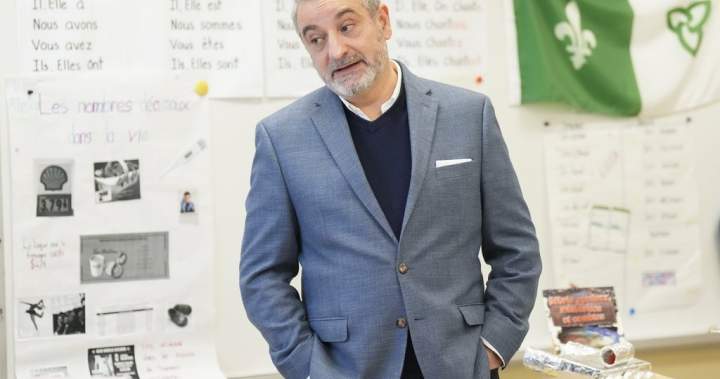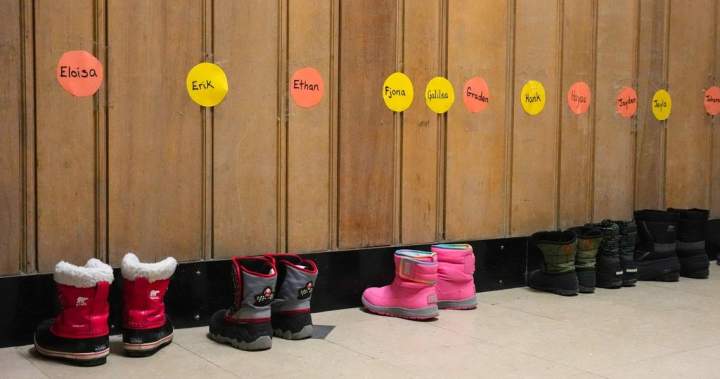COMMENTARY: Stunning playoff stats put Vladdy Jr. in same league as Babe Ruth and Lou Gehrig

Everybody knows that Vladimir Guerrero, Jr., is, as he would say in his native language, en fuego.
The Toronto Blue Jays first baseman is, in baseball parlance, mashing. He is raking.
But, how much is he mashing and raking? How much fuego are we talking about?
Baseball has a statistic, OPS, that combines a player’s ability to get on base and hit for power.
It’s a catch-all stat for a batter’s production at the plate.
The best postseason OPS in major league history belongs to New York Yankees immortals Babe Ruth and Lou Gehrig, who are tied at 1.214.
Vladdy Junior’s OPS this postseason: 1.337.
He has more home runs (8) than he has strikeouts (5), a fact that seems impossible but is, in fact, true. He’s the first player in MLB history with 25 hits, eight home runs and 15 RBI in a single playoff year.
It is, simply, one of the all-time great postseasons in the history of baseball.
The Toronto Blue Jays have a 3-2 lead in the World Series for a host of reasons, but the performance of their 26-year-old next-gen superstar is at the top of the list. He won the ALCS MVP in the last round against the Seattle Mariners.
And now he’s doing it all over again.
The craziest thing about this offensive explosion is that it is coming at the end of Guerrero’s seventh year in the big leagues.
It might seem strange to say it now, but the power surge is something of an outlier.
Did he discover something with his swing? Did he just need the rest that came with a week off after Toronto clinched a first-round playoff bye? Is he swept up in the narrative of leading a team that is collectively playing a little out of its mind?

Get breaking National news
For news impacting Canada and around the world, sign up for breaking news alerts delivered directly to you when they happen.
He’s had some good seasons, and a couple of great ones, but he’s also had a lot of long stretches where he hasn’t looked anything like the kid who was once the hottest hitting prospect in baseball, the baby-faced teenager with the Hall of Fame father who had a freakishly powerful bat.
It’s not that Guerrero had a poor year — his OPS of .848 was ninth in the AL — but it had to make the Blue Jays executives who signed him to a 14-year, US$500-million contract extension in April just a little bit nervous. Had they paid Ferrari prices for what was more like a high-end sedan?
Those questions have been blown away by furious playoff hack after furious hack, like the one that resulted in a laser of a first-inning home run in Game 5 on Wednesday night.
Guerrero is delivering the kind of devastating offensive performance of which Blue Jays fans — and executives — have long dreamed, only he’s doing it on baseball’s biggest stage, and against the toughest pitchers in the sport.
If nothing else, his timing is impeccable.
The funny thing about this run is that it’s probably less surprising to casual baseball fans who don’t closely follow the Blue Jays. Guerrero has long carried a high profile.
There is his famous lineage, but also the joyful way he plays the game, all big smiles and childhood recklessness, the kind of player who will leap into a diving slide to home plate simply because it’s fun.
There’s also his knack for big moments. As a teenager in the minor leagues, he hit a walk-off homer in a spring-training game at Olympic Stadium in Montreal, where he was born during his father’s time with the Expos.
As a 20-year-old, he placed second in the Home Run Derby during All-Star Weekend, where he hit a record-breaking 29 homers in the first round. (He would win the event four years later.)
Two years later, he smashed 48 home runs and led the American League in OPS, seemingly having arrived as one of the premier power hitters in the sport.
But his development was not linear.
He hit 32 home runs the following year, and 26 the year after that. He was still an elite hitter with exceptional contact skills, but that prodigious power was no longer on frequent display.
Theories abounded as to what had happened.
Had he sacrificed some of his natural power to be a better all-around player? Did his efforts to lose weight rob him of some of that juice?
He could still absolutely murder a baseball, but he didn’t hit them in the air as often. Over 156 games in the 2025 regular season, Guerrero hit 23 home runs, tied for 34th in the American League in that category.
One point of comparison: Andy Pages, the ninth hitter in the Dodgers lineup before he was benched in the World Series for lack of production, hit 27 home runs this season.
And now, this. Kaboom. Vladdy in Full. He hit a home run in his first at-bat of the playoffs, at home against the Yankees.
It would turn out to be an incredible statement of intent.
He still takes walks, still gets on base, but that power that once made his minor-league coaches speak of him in hushed tones has come roaring back.
Throw a mistake to Guerrero now, and he will send it to the moon.
The kid who has been the Jays’ next big thing for the better part of a decade is at the peak of his powers.
There are no second thoughts about that contract anymore.
There’s just anticipation about what Guerrero might do at the Rogers Centre on Friday night, the next time he’s at the plate.


The Ford government will fail to meet its target of connecting unserved or underserved communities to reliable broadband by the end of 2025, Global News has learned, at least partly because of the premier’s decision to tear up a contract for Starlink internet.
In 2021, the province launched a plan to connect every household in Ontario to high-speed broadband, promising even the most remote communities would have access by the end of this year.
Now, though, with October ending, officials are accepting the target is no longer possible, indicating contract chaos from the Canada-U.S. trade war and construction delays are bogging down the plan.
The updated goal to connect everyone in the province to broadband is moving forward three years to 2028.
One of the reasons the goal needs to be moved, a source told Global News, is the ripple effect of Premier Doug Ford’s decision to scrap a $100 million contract with Elon Musk’s satellite Starlink internet service.
The now-defunct agreement between Ontario and SpaceX was first signed in November 2024 to provide satellite internet to roughly 15,000 homes in the north of the province.

Get daily National news
Get the day’s top news, political, economic, and current affairs headlines, delivered to your inbox once a day.
When tariffs were unveiled by United States President Donald Trump a few months later, however, Ford said he would retaliate by “ripping up” the agreement with Musk, who was then a central figure in the Trump administration.
“It’s done,” Ford said in March. “We’re not going back there, it’s done.”
The process of ripping up the contract proved more complicated than the premier had first indicated and ultimately resulted in Ontario agreeing to pay Starlink an undisclosed break fee.
Cancelling the agreement also had consequences for the province’s attempts to connect remote homes.
The government source, speaking confidentially, said there were no “feasible” alternatives to Starlink that the province could use. They said officials are working through other options, but none are yet ready.
Essentially, the source said, no other satellite internet options can take on the slack left by cancelling the Starlink deal, with alternatives like Rogers satellite utilizing Musk’s company’s resources.
The broadband plan has also met with construction delays in remote parts of the province.
Many of the physical broadband expansion plans are in the hardest-to-reach parts of Ontario, with contractors encountering setbacks laying the fibre optic cables required to bring the rural areas online.
In a bid to boost those projects, a new regulation will take effect tomorrow, allowing internet companies to more easily piggyback on hydro poles across the province.
That, the government hopes, will save time by allowing fibre cables to be quickly installed on existing infrastructure, rather than having to blast through rockface to bury them or install separate internet poles across the north.
If, with the new measures in place, delays with construction persist, the government may re-contract the work to meet its new 2028 timeline. The source said conversations around that were still in their early stages and stressed many projects were still proceeding at a decent pace.
While Ontario will fail to hit its 2025 target, the government said it stood by the overall goal. The new deadline to offer widespread rural internet is now set for halfway through 2028, and officials insist progress is being made.
More homes, they say, will be connected at the end of this year than before, and the almost $4 billion internet expansion remains the largest in the country.
When the government first announced its plan in 2021, it said as many as 700,000 households lacked access to high-speed internet or had no broadband access at all.
© 2025 Global News, a division of Corus Entertainment Inc.

Ontario’s education minister has ordered a North Bay area school board to take immediate steps to resolve what a report described as overwhelming dysfunction or he will take “further action.”
Paul Calandra’s warning to the Near North District School Board comes after he placed five other boards under government supervision, and he is considering broad school board governance changes including eliminating the role of trustees.

Get daily National news
Get the day’s top news, political, economic, and current affairs headlines, delivered to your inbox once a day.
Calandra tasked a senior ministry bureaucrat with a review following media reports and parent concerns about problems at the board, and she submitted the report last month.
The report found that there is a “deficit of leadership” from the director of education and a fractured relationship between the administration and trustees, who themselves are divided and largely lack experience and knowledge of good governance.
The report says that dysfunction is partly to blame for a long-delayed opening of a new school in Parry Sound that has angered parents and students.
The board, through a spokesperson, declined to comment.
© 2025 The Canadian Press
Vaccine records aren’t up to date for more than half of Ottawa, Toronto students assessed: public health

Public health records for Ottawa and Toronto schools show that among the cohorts assessed this year, more than half of the students did not have up-to-date immunization records, which experts say exposes an antiquated system that’s unhelpful in the race to boost vaccination rates.
Toronto Public Health said it sent 60,000 letters over the summer to students in Grades 2 to 5 who hadn’t submitted records. The Immunization of School Pupils Act requires students to be vaccinated against nine diseases in order to attend school.
The public health unit said earlier this month about 54 per cent, or 50,000, students were still non-compliant, and would get suspension notices if their records aren’t updated in the coming months.
Similarly in Ottawa, the city’s public health unit said as of Oct. 12, about 16,000 students’ immunization records were not up to date in Grades 2 and 12. That’s more than 66 per cent of children in those age groups.
In Ontario, it’s up to parents to submit immunization records to public health units, which also send letters to households that haven’t done so or applied for exemption. Each year, local public health units select cohorts to assess for compliance.
Toronto Public Health said that in some grades, as few as 25 per cent of students have up-to-date vaccination records. It’s a particular problem among elementary school students.
Public health experts say the magnitude of students receiving these letters reflects that the cumbersome multi-step process, which often involves tracking down yellow cards or printouts from doctors’ offices, means public health officials have incomplete data.
“It’s not the ideal process and it is not what we would like to see happen,” Toronto’s Medical Officer of Health Dr. Michelle Murti said in an October interview at Metro Hall.

Get daily National news
Get the day’s top news, political, economic, and current affairs headlines, delivered to your inbox once a day.
This comes at a particularly critical time for Canada, which is seeing vaccination rates slide as health experts tackle misinformation online. Canada is also poised to lose its status as a measles-free country due to an ongoing yearlong outbreak that has infected more than 5,000 people over the past year.
If it does lose the status – which would happen later this year after meetings by the Pan American Health Organization – Canada would need to prove vaccination rates have improved to 95 per cent or higher and that it has robust surveillance to identify and contain cases in order to get its elimination status back.
Murti said the ideal scenario would be that health providers input vaccination records straight into a central provincial or national registry, a system doctors have been calling on the province to establish for decades.
Ontario’s top doctor Kieran Moore joined this chorus of calls last month, but acknowledged that the challenge is integrating data from various health-care providers stored in different systems. The Ministry of Health has said it is working on a digital tool to give people access to their vaccine records and other personal health information, but an estimated timeline was not available.
“We’ve been screaming from the rooftops for years on this issue,” Murti said.
Dr. Milena Forte is familiar with the perils of the vaccine reporting system, both as a family physician and a parent in Toronto.
Earlier this month, Forte said a mother brought her kids in for an appointment after receiving a letter from Toronto Public Health stating her children were missing vaccines. But when Forte checked her records, she saw the kids were up to date.
“You can imagine all the paperwork and all the people involved,” Forte said. “In a stressed system, we’re using resources to duplicate tasks – that doesn’t make a lot of sense.”
Forte received one of these letters a couple years ago stating that her own child was missing vaccines and would get a suspension notice if records were not provided.
She was confident her kid was immunized and even recorded the date, but she still had to go through the process of calling her doctor and asking them to pull up the information in their system, and forward her documentation to the school and public health.
“It’s creating extra work and we could be using this time to counsel on other preventative health issues including things like vaccination,” Forte said.
Last year, Hamilton’s public health unit sent almost 22,000 letters to parents of students in Grades 8 to 12 and 1 to 3 about incomplete vaccination records, representing about 38 per cent of the pupils in those cohorts. About 6,400 were eventually suspended.
Toronto Public Health says in the ’24-’25 school year, 6,090 students were suspended for one day or more. More than 4,400 students were still suspended by the second day.
Joe Crampton, a father of two kids in Hamilton, said it’s “ludicrous” that there is not one consolidated record of all of this information.
“The way you’d expect this to work in a financial institution is that you would just grant access from one entity to look at the other entity. But you don’t do that. You type into a system from a handwritten yellow card, but if you can’t find a card, you’re in trouble,” said Crampton, who works in financial institution software.
Ottawa-based Dr. Kumanan Wilson has been advocating for a vaccine registry for close to two decades.
The challenge at hand has stayed the same, except he said one element has changed that could make a difference: the resurgence of vaccine-preventable diseases like measles.
“It’s something we never expected to see,” he said. “There may be perhaps a bit more of an urgency to approach this.”
© 2025 The Canadian Press
-

 Uncategorized5 months ago
Uncategorized5 months agoShop Proud, Eat Proud, Be Proud — Ottawa Canada Day Market This June 28th
-

 5 months ago
5 months agoRing of Fire road to bring prosperity to First Nation, problems for caribou: report
-

 5 months ago
5 months agoMeasles circulating in northeastern B.C. community, health officials warn
-

 5 months ago
5 months agoCanada’s world junior trial saw juries tossed, intense testimony. Here’s a recap
-

 4 months ago
4 months ago161 bricks of suspected cocaine found on truck trying to cross Canada-U.S. border
-

 5 months ago
5 months agoFormer major leaguer, Jays doctor Ron Taylor dies
-

 5 months ago
5 months agoJagmeet Singh apologizes for attending Kendrick Lamar concert after Drake calls him out
-

 5 months ago
5 months agoAnishinabek Nation chief says he briefed Ontario police on protests against Bill 5





